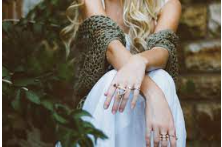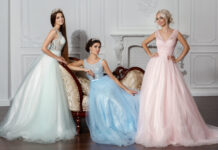Jewelry is a universal form of adornment, prevalent since prehistoric times, made from shells, stones or bones and later, improved and derived from practices of the ancient Egyptians and Greeks. In the past, apart from adorning the body, whether intentional or unconscious, they helped place the user in the world and affect how others perceived them. Accessories have been known to symbolize the status or rank of the wearer and vary in material or price across regions and cultures in the world.
Be it the use of serpent-shaped bracelets in Egypt to symbolize fertility and immortality, designs representing deities or sacred animals to protect the bearers, many jewelry styles have traveled through time and been a medium to show one’s personality or complete an outfit. It is no more only reflective of a person’s social importance as it was in the past. Many young people see accessories as another way to show their personality, and it has now become a true form of self-expression. It depends on the user’s preference to use a medium to express themselves. So if you’re fond of jewelry, keep reading to find out how your choice of jewelry reflects your personality.
1. Choosing the affordable and unique
Some have a belief system that refrains them from wearing accessories made of precious metals like gold or stones like an emerald. They appreciate good jewelry but choose from affordable options like steel or brass. Such users not only have an eye for the unique, such as copper jewelry, but also affordability. They might opt for super chic styles like wire-style mixed metal jewelry and advocate living in the here-and-now.
2. Picking the finest quality
People looking for long-term investment in a quality and one-of-a-kind jewelry that would last beyond the current season often freak out about online shopping, worry about being cheated, and don’t settle for the most affordable choice. Users with trust issues would rather visit some trusted and certified jewelers in Seattle and examine the accessory first-hand than buy a likable product at a lower price. Such buyers want dependable high-end jewelry that doesn’t wear out and sticks with them for years. Big brands ensure that a customer, nomatter how insecure, is fully insured.
3. Going with what’s trending
With most of the time youngsters and professionals mostly spent at home during COVID-19, there’s a new rise in comfortable clothing and accessories. Video conferences have highlighted the importance of jewelry that goes around the face. Although the top picks are lately small hoop earrings, wearers often choose between classic gold, silver, or a diamond pendant or studs set. You may buy what’s trending simply to fit in with the latest fashion, get involved in a gang or have a new topic of conversation with your friends or colleagues! The choice of what’s trending also reflects your desire to be relevant always.
4. Announcing a change
The practice of piercings, prevalent in places like Amazon, Asia, Africa, has recently provoked a growing interest in the West. One may want to announce a significant change in their life by wearing a piece of jewelry to commemorate a religious event or the war dead, announce engagement, loss or the acceptance of sexuality, mark the survival of a major life-changing episode or accident, and other reasons. This accessorizing style can reflect a carefree person, a rebel or someone committed to their views.
Conclusion
Jewelry is important from an aesthetic point of view and as a medium of expression. Also, if you’re fond of accessories, explore their symbolism from cultures worldwide to better understand your jewelry pieces.










![Anso FG Reviews: UPDATED 2024 [ansofg.com] Anso FG Reviews UPDATED 2024 [ansofg.com]](/wp-content/uploads/2023/12/Anso-FG-Reviews-UPDATED-2024-ansofg.com_-100x70.png)







